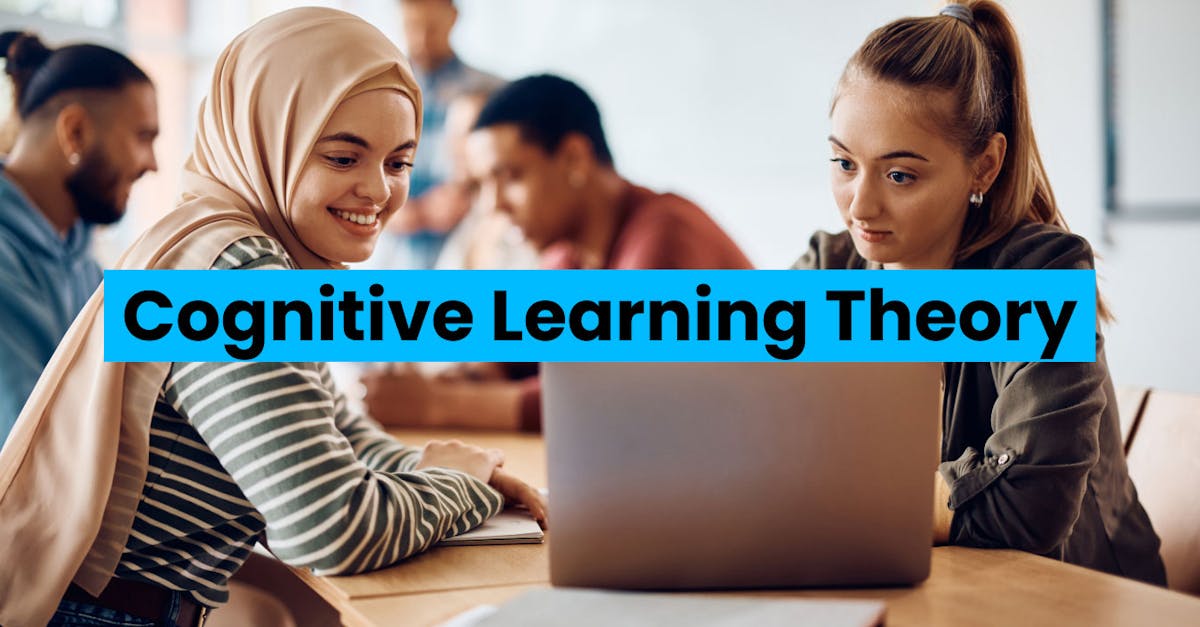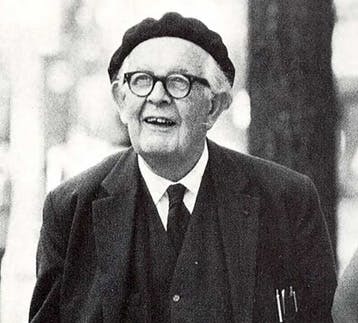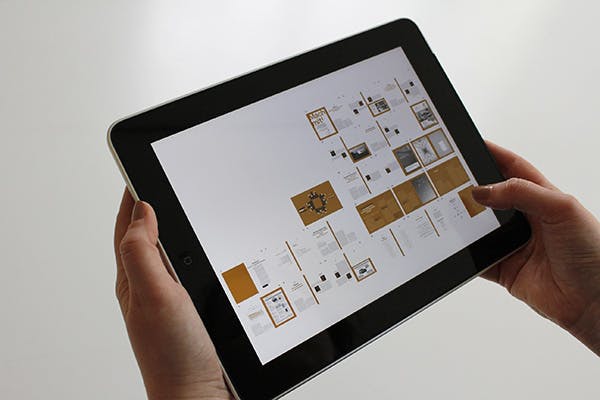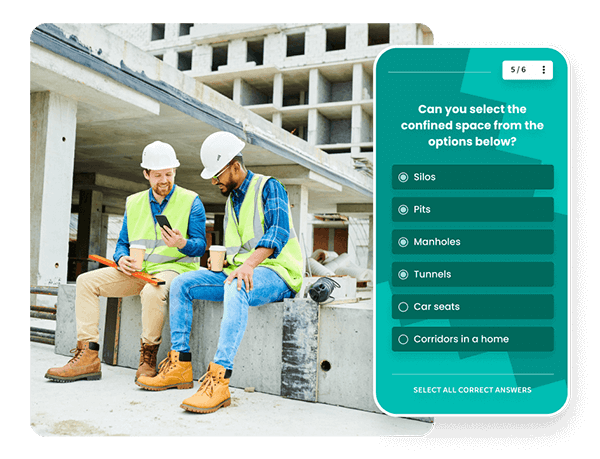Cognitive Learning Theory: History, Examples, & Strategies

Cognitive Learning Theory (CLT) explains how we take in, store, retrieve, and process information when we're learning, instead of just rote memorization. In this article, we'll dive into CLT and learn about its history, relevance, and how it fits into the way we learn and train in the modern world.
History of Cognitive Learning Theory
Cognitive psychology is all about how we know, understand, and think about the world around us. Cognitive Learning Theory (CLT), on the other hand, came about in 1936 thanks to a psychologist named Jean Piaget. He figured out how our minds develop and how we acquire language.
Basically, Piaget's theory says that knowledge isn't something we just passively absorb. It's actually something we actively construct based on what we already know. So, it's like building blocks of knowledge on top of each other. This idea of actively constructing knowledge is also known as Active Learning Theory.
Here's the thing: CLT is different from another theory called behaviorist theory. See, behaviorists focus on outward behaviors and responses, but CLT looks at what's happening in the learner's mind, helping us understand how our thoughts and mental processes affect our behavior.
As part of the cognitive approach psychology, the cognitive learning process relies on people digesting information to produce a specific behavior. And it’s been found that these mental processes have a number of components, including:
- Organizing
- Interpreting
- Categorizing
- Attention
- Observing
- Forming generalizations
Founder of Cognitive Learning Theory
As a Swiss developmental psychologist, Piaget focused on the growth of human intelligence in his theory of cognitive development. Through his research, Piaget uncovered insights into the essence of knowledge and how individuals acquire and apply it. He challenged the notion that children are merely miniature versions of adults, instead emphasizing that children possess distinct thinking and communication styles.

Definition of Cognitive Learning Theory
Cognition pertains to the mental procedure of acquiring and preserving information. Additionally, it involves the capacity to comprehend via thinking, firsthand encounters, and perception. Cognitive learning, on the other hand, denotes an active and enduring form of learning. This particular type of learning is typically highly interactive, involving learners in diverse activities that optimize brain efficiency, facilitating the acquisition of novel knowledge.
CLT is further divided into other cognitive models: the Cognitive Behavioral Theory (CBT) and the Social Cognitive Theory (SCT).
Cognitive Behavioral Theory (CBT)
Cognitive Behavioral Theory explores the influence of cognition on individuals' behavioral patterns. It suggests that individuals' behavior is directly influenced by their self-concepts, which can be shaped by external or internal factors, regardless of whether they are positive or negative.
The Cognitive Triad, a key element of CBT, delves deeper into how negative thoughts specifically impact human behavior. It involves:
- The Self
- The World/Environment
- The Future
Social Cognitive Theory (SCT)
Social Cognitive Theory takes three factors into consideration:
- Behavioral factors
- Environmental factors (extrinsic)
- Personal factors (intrinsic)
The integration of these three factors leads to a productive learning experience, encompassing diverse fundamental concepts that become apparent in the learner.
- Observational Learning: This form of learning involves individuals acquiring cognitive knowledge by observing the behavior of others. EdApp's social and peer learning features, such as Discussions, facilitate the opportunity for users to learn from one another.
- Reproduction: Increasing the repetition of a behavior enhances the likelihood of better knowledge retention. This is accomplished by providing learners with a comfortable environment and easily accessible materials that are relevant for learning and practice.
- Self-Efficacy: Self-efficacy is attained when newly acquired knowledge is applied in practical situations.
- Emotional Coping: Effective coping mechanisms in challenging situations are valuable for successful learning.
- Self-Regulatory Capability: Self-regulatory capability refers to individuals' capacity to control their behavior even in unfavorable environments.
What are the three main cognitive learning theories?
Researchers have explored various theoretical approaches to improve learning, considering the inherent cognitive limitations we possess. Here, we’ll examine three of these main learning theories:
Dual Coding Theory
Dual coding is a theory that uses different types of stimuli to help us remember things better. You see when we learn something, we want our brains to store it in a way that makes it easy to remember later on. That's where dual coding comes in.

In classrooms, teachers often use two main types of stimuli to help us learn: visuals and words. Visuals are like pictures or diagrams, and they go straight into our working memory. This working memory is like a temporary storage space in our brains that helps us process and remember information. The cool thing is that visual information gets processed all at once, so we can recall it in any order we want.
Cognitive Load Theory
John Sweller wrote a paper about a theory called Cognitive Load Theory back in 1988, which got published in the journal Cognitive Science. Now, when we talk about "cognitive load," we're basically referring to how much information our working memory can handle at a given time.

Sweller noticed that our working memory has its limits, so he suggested a cognitive approach. This discussed that instructional methods should be mindful of not overwhelming it with unnecessary activities that don't really help with learning.
For example, imagine you're looking at a diagram, and one version has all the labels right there on the diagram, while another version has the labels listed separately on the side. According to Sweller, the version with the labels on the diagram itself puts less strain on your working memory compared to the one with the labels off to the side.
Cognitive Theory of Multimedia Learning
Studies have shown that our minds process visuals and sound differently. It's like we've got these two separate channels in our brains and they have different capacities for learning stuff. Turns out, when we have pictures along with words, we tend to learn better compared to just having words alone.

Now, a guy named Richard Mayer came up with the theory called the cognitive theory of multimedia learning. Basically, it's all about using different media in teaching to make it more effective. See, when we use instructional stuff like pictures, videos, or other visual aids, it taps into how our minds process information. And the result? Learners understand and remember the stuff way better.
When it comes to multimedia learning, combining words and pictures can really take your understanding to a whole new level compared to relying solely on words. That's why watching YouTube videos has become such a popular way for people to acquire new hobbies or learn new skills. It's amazing how much you can absorb when you see things in action!
What are cognitive learning strategies?
Cognitive learning strategies are all about helping learners dive deep into the information they encounter. By really grasping the concepts, learners become more adept at transferring and applying that knowledge to new and different scenarios.
It goes beyond just skimming the surface and relying on short-term memory. Instead, cognitive learning strategies foster a deeper understanding that sticks around in a learner’s long-term memory, ensuring that the concepts become firmly ingrained.
Here’s a list of the top cognitive learning strategies that mentors and trainers can use to help their learners retain knowledge more easily:
- Repetition
Repetition, though simple, is an incredibly effective technique for retaining information in our long-term memory with precision. Whether it's revisiting our notes, rewatching a seminar, or practicing an exercise repeatedly, each repetition solidifies the information in our memory.
But, it's crucial to spread out the repetitions across multiple sessions over different days or months, as cramming everything into a single session won't result in long-term retention.

To start implementing this in your own training programs, you can use tools like Brain Boost by EdApp. This spaced repetition feature uses the SM-2 algorithm to automatically repeats key topics in your microlearning courses until your learner is able to retain the information. Basically, it works by pulling incorrectly answered slides to show again to your learner.
- Real-world examples
It can be helpful to place information within a relatable scenario or example to make it more understandable. Without a specific context in which we can apply the knowledge, learning information can feel quite abstract. When teaching about Math, you can show its real-life applications by giving examples like managing personal finances, calculating grades, and measuring ingredients when cooking.
In the workplace, you can do this by giving your team access to scenario training methods like VR simulations, quiz scenarios, and role-playing training.
- Quizzes, assessments, and flashcards
These are simple yet highly effective learning methods that you can easily employ. They can also help learners in various scenarios, including exam preparation, speaking practice, identifying knowledge gaps, and boosting confidence in their level of understanding.

Another handy feature of EdApp that you can use is Rapid Refresh, which allows you to strengthen crucial concepts. With this feature, you can create scenario-based training assessments and easily schedule them. The best part? You can directly deliver these assessments to your team members' mobile devices, ensuring seamless access and engagement.
Join EdApp for free and start implementing your cognitive learning strategies with ease!
Author
Hannah Malmstrom
Hannah is an eLearning writer who dedicates her time to creating in-depth content about EdApp, a multi-award-winning mobile LMS that has pioneered one of the most progressive microlearning solutions on the market. She brings years of writing experience in the online software industry to her current role in the eLearning sphere. When she's not writing, you can find her catching up on new anime series or re-reading her favorite novels.
